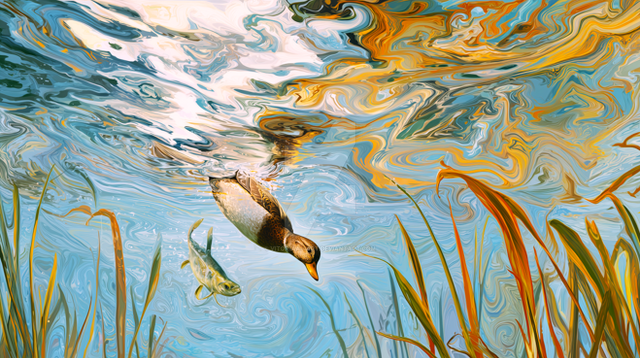HOME | DD
 Taz0Tay — ever more complex sponges in the deeper shallows
Taz0Tay — ever more complex sponges in the deeper shallows

#alien #colour #evolution #fauna #flora #floral #landscape #ocean #sea #water #aliencreature #alienworld #exobiology #speculative #oceanlandscape #speculativeevolution #speculativebiology #exobiotica #speculativezoology
Published: 2021-01-09 21:08:12 +0000 UTC; Views: 2688; Favourites: 19; Downloads: 0
Redirect to original
Description
The organisms of Nethos are starting to spread to deeper regions as well as there locations spread, soon they will be all over these seas to ensure survival. However the organisms evolve to be ever more difficult to classify to say what they are.The grazer Slunge as evolved into the Alien version of Kimberella. There movement is revolutionary in which they can reach higher speeds then other moving organisms on the floor and so the energy requirement as increased for these critters, they are identified with a a blanket like body covering on there sides.
The Big sponge has split into two, The Potato sponge is shown looking similar to the greater sponge just without a sort of primitive "stem". If the currents are strong they can even move location without harming itself.
The Fish Jellunge has also evolved, becoming the Aqua Jellatis with longer periods of drifting in the shallows and not being stuck on the ground, there body composition is lighter allowing water to be filtered within the organism giving a boost of buoyance.
The Shaved Sponge has split into two, The webbed Coramone and The Wig Coramone. The Webbed one of course is named by its umbrella aspects, helping it to capture more of the nutrients in the water. The Wig Coramone achieves the same result but uses lots of strands to filter the water.
The Primitive Coral has evolved into Coral, seen in pink. They come in many colours giving primitive coral reefs a more vibrant look. Due to there long lives they can form hard forests of themselves.
The Thorns Sponge Third evolved organism is the Stemmed Sponge, There bodies can withstand a brutal storm as they are reinforced and grow very slowly ensuring there survival. They can reach very tall sizes due to the long growth span.
The Tri Sponge second is the Biter Spovita, the given name is because of there "Shells" ability to snap shut when anything flows in-between them. May indicate a feeding method like a Venus flytrap however they still also filter the water like sponges or when a dangerous currents are forming to protect the more fragile part of there body.
The Tubular Charika has evolved into the Rolly Sponika. Having a body shape of a tentacle and a blue hue they can curl up in rough waters and can open up there upper body for the "leaves" to gain nutrients when it is needed for the organism.
The Plain Charika has evolved into The Charnia, the ability of getting nutrients in the water and not relying on photosynthesis has allowed these organisms to spread deeper in the water. Due to there growth pattern being replicated they can reach long lengths.
The Star Corika has evolved into the Gulper Corika, This organisms is a lot more of a carnivore then other organisms as any moving organisms falls into there mouth are eaten as there appendages detect the prey. Due to the simple organisms it is unlikely to survive. The poor thing....
(The Gulper Corika is Inspired by Hyrotrioskjan urnamimida)






























